#amateur astronomy
Text

Commission for @foxgirlchorix of a foxgirl robot with just, like, absolutely MASSIVE radio telescope ears.
#commission#amateur astronomy#i might not do furry art on my own time but i will draw it if you pay me!#radio telescope#telescope#dobsonian telescope#astronomy#foxgirl#fox girl#robot girl#robotgirl#foxgirl robot#furry art#sfw furry art#furry#whirry
133 notes
·
View notes
Text
Neighbor has BRIGHT FUCKING LIGHTS THAT RUIN MY SOUTHERN SKY I have been WRONGED this is the WRONGEST EVER
31 notes
·
View notes
Text
Hello there, I am a space nerd, a fact I’m sure no one guessed from the fact that I go by Stars on the internet. I am here to explain how the moon works, because I think it’s cool and also something that most people don't know. This is mostly an infodump just for fun, but may also be vaguely useful for artists, writers & stargazers.
By “how the moon works,” I mean that although pretty much everyone knows about the moon’s phases, not everyone really gets how they affect things like when & where the moon is in the sky. See: the common idea that the sun is in the sky in the day, and the moon is in the sky at night. You know this isn’t strictly true if you’ve ever seen the moon in the sky in the daytime, but do you know how it actually works? If I gave you a moon phase and a time of day, would you be able to tell me whether the moon was in the sky or not?
I am here to (hopefully) explain how you can do that! With scribbly diagrams! Please join me under the readmore if you would like to come to my TED talk.
First of all, to avoid any accidental curse-of-knowledge assumptions on my part, let me define some terms!
First off, the phases of the moon, which you probably know most of, but bear with me. A “full moon” is when the moon is fully illuminated and appears as a circle in the sky. A “gibbous moon” is when the moon is more than half full, but not completely full—it appears large and roundish, but not a circle (not everyone knows the name for this one). A “half moon” is when the moon is half illuminated and appears as a semicircle—this one has some other names that I’ll get to in a second. A “crescent moon” is when the moon is less than half illuminated and appears as a concave curve. A “new moon” is when the moon is completely dark from Earth’s perspective and can’t be seen in the sky.

Also, “waxing” is when the moon is transitioning from new to full, or getting bigger in the sky, and “waning” is when the moon is transitioning from full to new, or getting smaller in the sky.
Speaking of “half moon,” I frequently confuse friends by calling this a “first quarter” or a “third quarter” moon. Those names refer not to the illumination of the moon but to the full cycle of phases. If you think of the moon phases as split into four quarters, starting from zero at a new moon, then halfway to full is 1/4, full is 1/2, halfway back to new is 3/4, and then we’ve reached the end/beginning of the cycle with another new moon. So one of the half moons is a first quarter moon, and the other (with the other half illuminated) is a third quarter moon.
This is where I have to add a disclaimer—I am in the northern hemisphere, and I am familiar with astronomy in the northern hemisphere. If you are in the southern hemisphere, to you, I am looking at the moon “upside down.” Yes, really. If you’re using my diagrams, flip them upside down. I’ll try to be clear when I’m talking about stuff that flips between the hemispheres, but it’s something that I struggle to wrap my head around too, so apologies if I’m confusing or miss something.
So, here’s a diagram of the moon phases to show you the difference between first and third quarter moons, but if you’re in the southern hemisphere, please flip it over to see what they would look like for you. (The chronological order still goes in the same direction as the arrow, the moon itself is just the other way in the sky.)
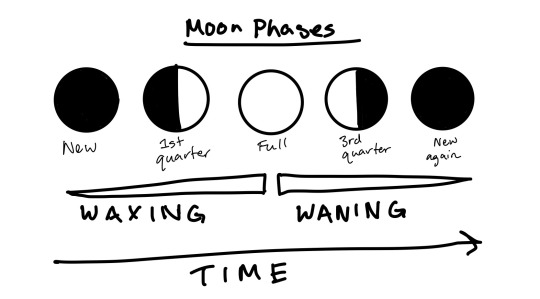
The fun trick I was taught to remember which way the cycle goes is “light from the right.” (Southern hemisphere people, you’ll have to flip this one.) Light, or shadow, moves from the right edge of the moon to the left. So if the moon is a crescent and the right edge is lit up, it’s waxing, or moving towards full. If the moon is a gibbous with a dark right edge, it’s just past full and will be waning towards the third quarter over the next few days. If you look at the diagram above (and imagine the crescent and gibbous phases transitioning in between), this might be easier to imagine.
Like I said, for the southern hemisphere this would actually be “light from the left.” If you’re near the equator and the moon is overhead, you could use “light from the west,” because that’s secretly the real rule. Another thing that’s useful to know for stargazing—the moon, sun and planets follow a path in the sky called the ecliptic, which is roughly over the equator. (Not exactly—it wiggles around relative to earth’s surface, because of the tilt of the earth’s axis that causes the seasons, but it stays near the equator.) If you’re standing in the northern hemisphere, the equator is south of you, so the ecliptic is also in the southern part of the sky. When you look at the moon, it will always be in the south, so the west-facing side of the moon will always be to your right. Likewise, if you’re in the southern hemisphere, the moon (and sun, and planets) will always appear in the northern half of the sky, so west will be to your left. Light moves across the moon’s surface from the west to the east.
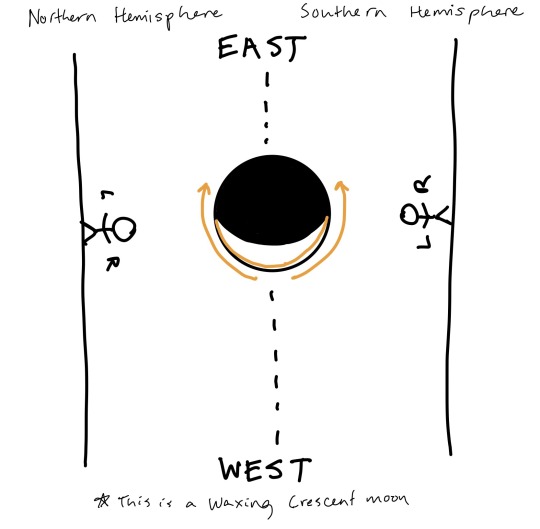
Now you can impress people by looking at the moon and saying, “Oh look, what a lovely waxing gibbous!” (I don’t actually know if the is impressive, but I do it all the time. For bonus points, get an app on your phone that tells you the phase of the moon and check it frequently so you can plan when to stargaze. Then you can casually mention that the moon will be full in a couple days when it’s not even in the sky, and maybe people will think you’re a werewolf.)
Now that I’ve explained the moon’s phases, I get to explain how they’re related to the time and place that the moon is in the sky. See, most people (I assume) don’t think twice about things like, say, a book describing a crescent moon in the sky overhead at midnight. But that actually can’t happen! And it has to do with the moon’s position in the 3D solar system, and how that maps onto our sky. This is kind of hard for me to explain without a lot of 3D hand gestures and pointing at the sky, but I’m gonna do my best to show it in two dimensions.
So, most people probably know that the moon’s phases are caused by the sun’s light illuminating half of the moon, and since the relative positions of the moon, sun & earth change throughout the month, the half that’s illuminated moves around the moon and changes how it looks from our viewpoint. So, a very basic rule: the side of the moon that’s illuminated is the side that’s facing the sun.
So, when the moon is full, that’s because the side that faces us is also facing the sun. This means the sun is directly opposite the moon. Here’s a very scientific diagram:
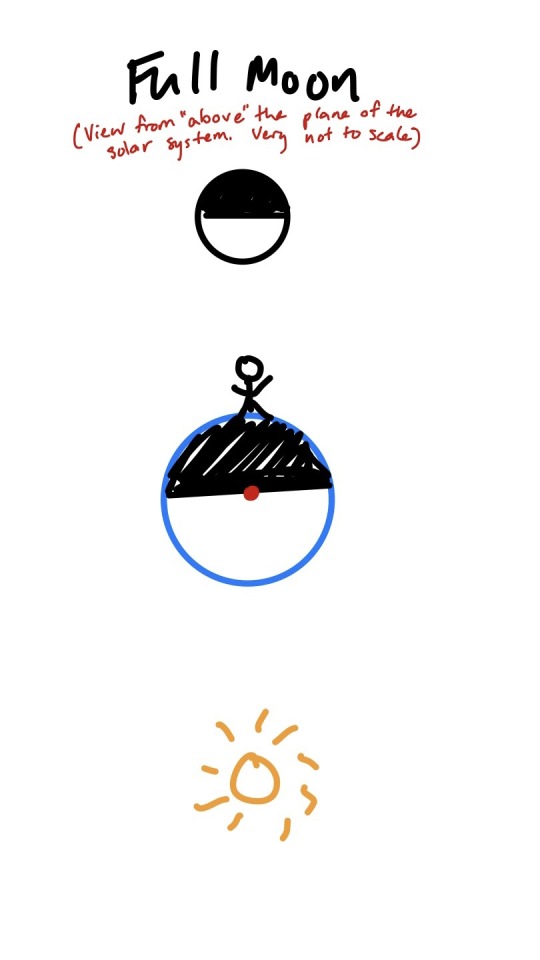
In case it’s not clear, this is a “top-down” view of the solar system where the moon, earth and sun are all in the same plane (in this case it doesn’t matter if we’re looking at the north or south pole, the positions would look the same). It’s also obviously not to scale and very simplified, but the point is to demonstrate that the moon is opposite the earth from the sun.*
The little person on the earth is of course spinning around as the earth rotates once per day. But at this point in the lunar month, you can see that when they are on the side of the earth where they can see the moon, they are also on the side facing away from the sun. When the moon is full or close to full, it’s opposite the sun—it rises around sunset, sets around sunrise, and is at its peak in the sky around midnight. This is how lots of people tend to think of the moon rising and setting, but it’s only true when the moon is close to full!
If that doesn’t make sense, here’s a diagram of when the moon is at the opposite point in its cycle, a new moon:
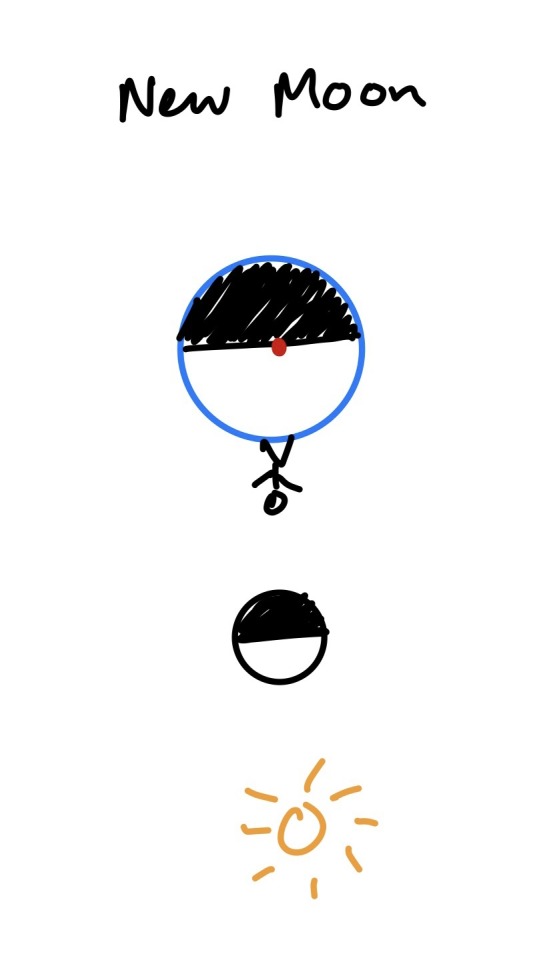
When the moon is new, the side that faces the earth is dark, which means the opposite side is facing the sun. The moon is on the same side of earth as the sun is. The little person spinning around the earth won’t see the moon in the night sky, because the moon is close to the sun in the sky,* and it’s actually rising in the morning and setting in the evening at this time of the month! You can’t easily see the moon when it’s new, but it might be visible a few days before or after this as a crescent. You’ll only see a crescent moon in the sky during the day, or close to dawn/dusk—it will be close above the horizon where the sun has just set or is about to rise. (The light edge faces the sun, so if it’s near the horizon in twilight sometimes it will look like the light edge is actually pointing down, with the tips of the crescent pointing up in the sky.)
*A side note on eclipses: My diagram is oversimplified! The moon, earth and sun aren’t actually all in the same plane all the time, they’re slightly misaligned. So even when I say the moon and sun are “directly” opposite each other, or aligned, they aren’t lined up perfectly enough to cast shadows on each other most of the time. When they do line up perfectly at the right time, that’s when you get a solar eclipse (when the moon is new) or lunar eclipse (when the moon is full).
Okay, so when the moon is full it’s in the sky at night, and when the moon is new it’s in the sky during the day. What about in between?
This is where it gets a little confusing, especially for those of you in the southern hemisphere, who are going to have to flip everything I say. Apologies in advance, but it kind of hurts my head even to explain how this works in my own half of the sky.
So, when the moon is half-full, at the first quarter and third quarter of the phase cycle I explained above, the sun’s light is coming (from our perspective) from the side. The moon is ninety degrees away in its orbit from full or new, and the sun’s light is effectively perpendicular to our viewpoint, instead of parallel. This time it matters which way we’re looking, so these are a top-down view from the northern-hemisphere side. If you’re in the southern hemisphere, I think you can flip which is the first & third quarter to make this accurate.

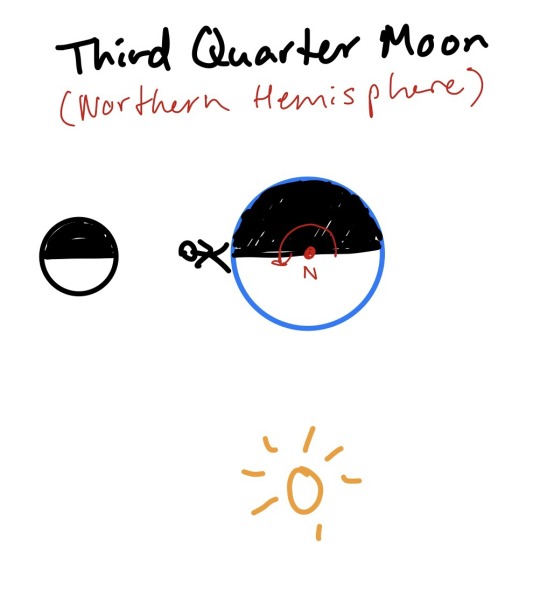
As you can see, when our little person is spinning around the globe, they’re going to be seeing the moon high in the sky right around the line between night and day. From a northern perspective, the earth spins counter-clockwise (vice versa from the south), so if you picture the person spinning around their little earth, you can see that the first quarter moon is going to be visible when they’re spinning from light to dark (sunset) and the third quarter moon is going to be visible when they’re spinning from dark to light (sunrise).
Bonus fun trick: If you remember the rule of “light from the right” in the northern hemisphere and how that determines the order of the phases, and look at these diagrams again, you can figure out which direction the moon orbits the earth from this viewpoint. (This is, in fact, the only way I can remember which direction the moon orbits the earth, despite being far more complicated than just memorizing it. If you’d like to make a game of it, I’ll put the answer at the bottom of the post).
Remembering how this looks from this top-down floating-above-the-earth perspective is hard, but you don’t really have to. I only explained it so it would make sense when I went back to my earlier visualization, from when I was explaining how “light from the right” works. I’m a very spatial learner, and I like picturing things relative to my own body, so this is how I remember when the different phases of the moon appear in the sky:
Imagine you’re standing, facing the ecliptic, where the sun and the moon travel through the sky. In the northern hemisphere, you’re facing south, with east to your left and west to your right. Imagine that the sun has just set, falling beneath the horizon to your right. Imagine that the moon is full, and hopefully I’ve explained well enough that now you know where it will be—cresting the horizon at your left. Imagine the opposite too—the sun is rising in the east at your left, as the full moon sinks in the west at your right. The new moon’s position, if you’d like to visualize that, is effectively the same as the sun.
Now, the difference between the two half-moons. Light comes from the west—in the northern hemisphere, your right—so when the right half is illuminated, it’s the first quarter of the lunar month, waxing to full, and when the left half is illuminated, it’s the third quarter, waning to new. One is high at dusk and one is high at dawn. Which is which?
You’re facing south. Picture a first quarter moon, right side lit up, at its peak in the southern sky. The light side is always facing the sun. Where is the sun? It must be to your right, touching the horizon in the west, setting. The first quarter moon is in the sky before, during and after dusk.
Picture a third quarter moon, left side lit up, at its peak. The light side faces the sun. The sun is to your left, touching the horizon in the east, rising. The third quarter moon is in the sky before, during and after dawn.
When I imagine this, I’m standing on my back porch, where I often go outside and stargaze. My telescope is small and one of the few things it can see with any detail is the moon. I want to be able to look at the moon just after dark, without having to stay up too late—and this memory device, of facing south and imagining the sun at my right hand to the west, is how I remember that the first quarter is the best time for me to observe the moon. It will be high in the sky at sunset, easy for me to see over the houses and trees.
If you remember that the moon waxes and wanes from the west (right in the north, left in the south), then you can fill in all the gradations of crescent and gibbous moon between the four main quarters. (As an example, if I wait a few days past first quarter to go outside and look at the moon, it’s waxed into a gibbous moon and it rises later in the evening, peaking in the sky closer to midnight. Another example: a waxing crescent is between a new moon and first quarter, so it will trail behind the sun and be above the horizon in the southwest at sunset.)
I hope that all of this makes sense and is useful to someone, whether for figuring out when you can observe the moon and where in the sky to look, or for thinking about how to place it in the sky in your writing and art. If nothing else, I hope I have brought you entertainment, and/or ruined the way the moon works in Minecraft for you forever. (It rises and sets directly opposite the sun!! Even when it’s a new moon!!! Light doesn’t work like that!!)
And finally, if you were trying to guess, the moon orbits the earth counter-clockwise if you’re looking down from the northern side.
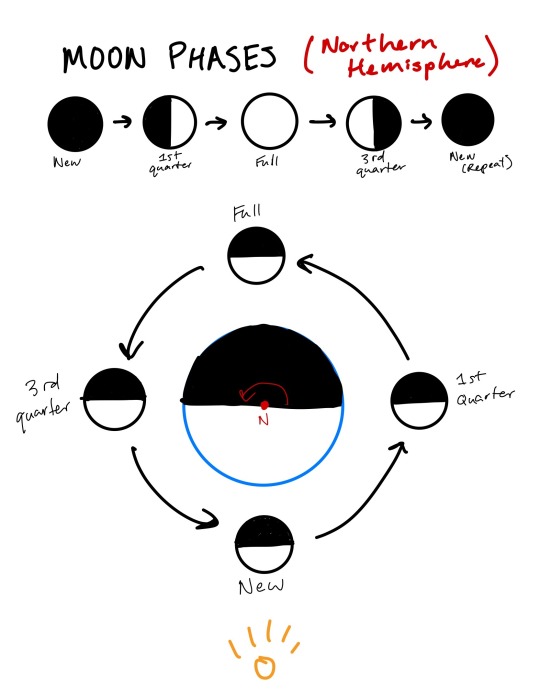
#stars has thoughts#space#the moon#amateur astronomy#thank you for coming to my ted talk#and thanks discord friends for saying 'write the moon infodump post!!'#when i was like 'i wonder if i should write a moon infodump post'#i am a humble space nerd slash backyard astronomer with a 4inch scope#but explaining how i visualize and remember space stuff in simple terms is one of my favorite things to do ever#i could do a bunch of other posts about stuff like this. why venus is the morning star. how telescopes work (explain it like i'm 5 edition)#perhaps i will#undescribed#(i will try to come back with image descriptions later but i have already done all the explaining of visual concepts with words#that i can manage today. apologies)
72 notes
·
View notes
Text
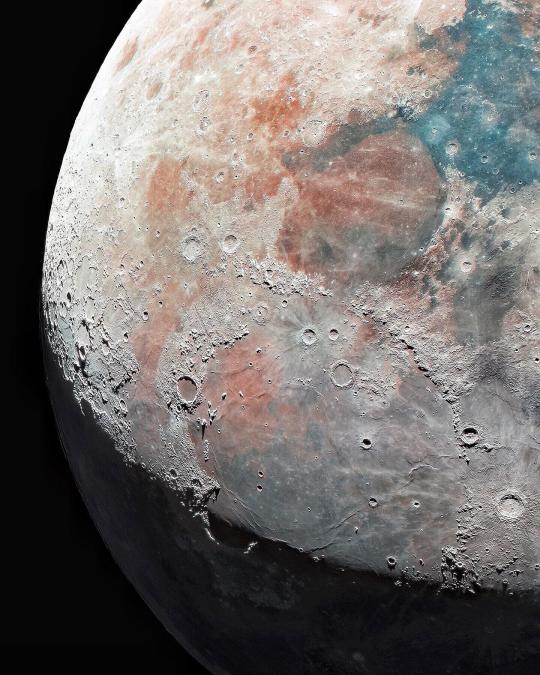
The Moon, as seen through an 8" telescope.
(©)
#daily moon#goforqueuedeploy#space#spaceflight#space exploration#space science#space and astronomy#astronomy#cosmos#science#tech#technology#engineering#stem#moon#the moon#luna#lunar#telescope#amateur astronomy#amateur photography#space pics#moon photography#space photography#astrophotography
205 notes
·
View notes
Text
The Spotted Sun
My solar image captured with a Canon DSLR utilised a DIY solar filter, inspired by Jim Ruebush.

View On WordPress
#amateur astronomy#AR 3591#AR 3592#AR 3595#AR 3596#AR 3598#AR 3599#AR 3600#AR 3602#AR 3603#AR3599#Astronomy#Cosmic Focus Observatory#cosmos#Featured#image#nature#Orion glass solar filter#photography#science#Sol#solar#solar disc#space#sunspot#sunspot number#Universe
19 notes
·
View notes
Text
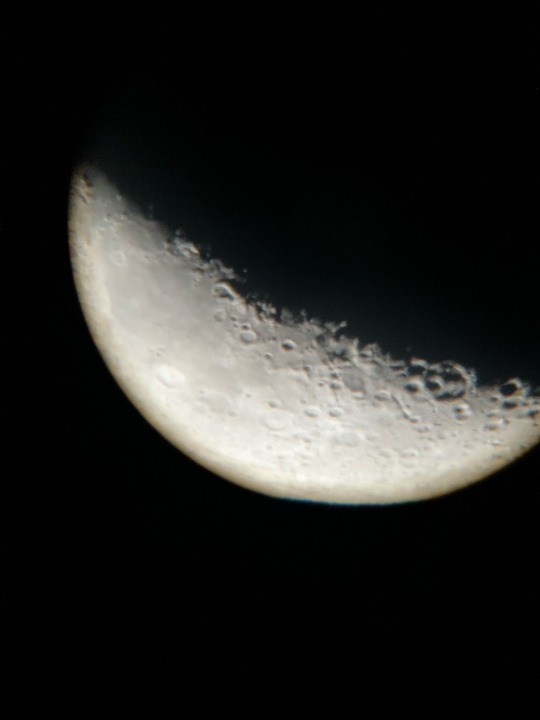

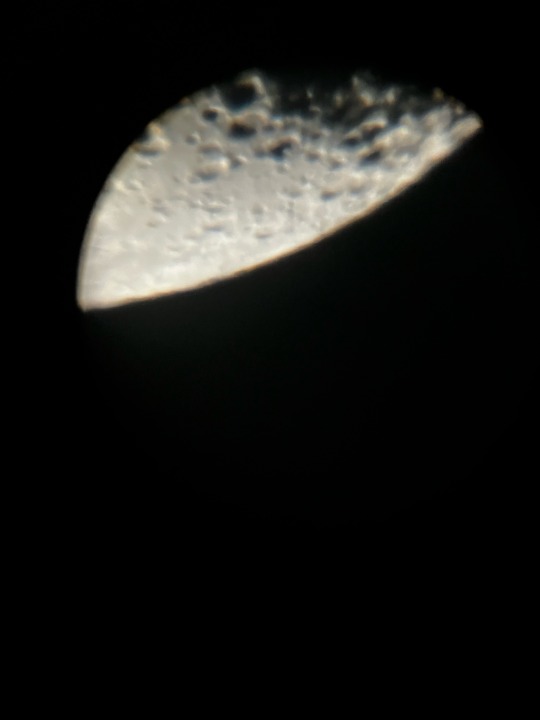
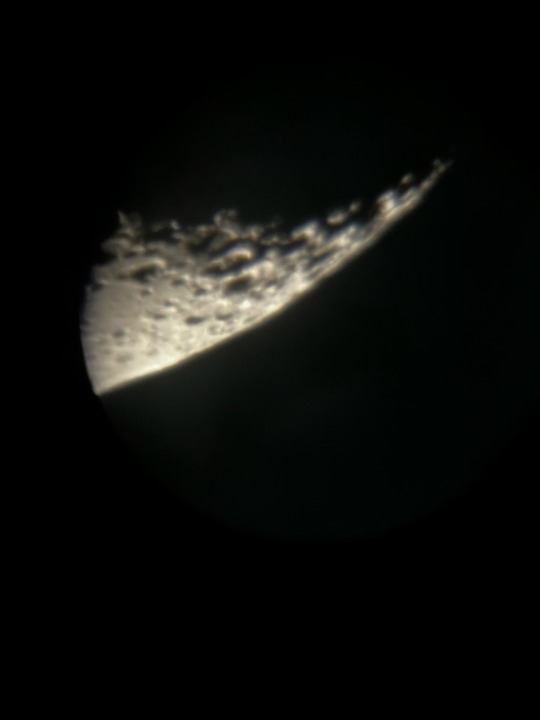

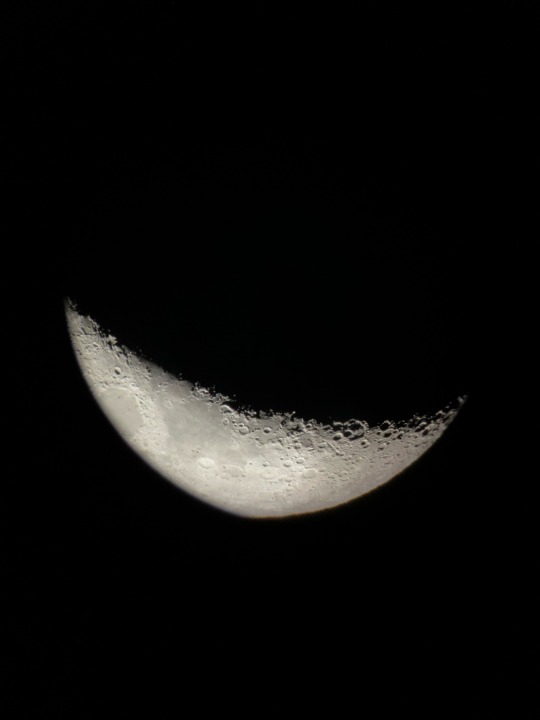
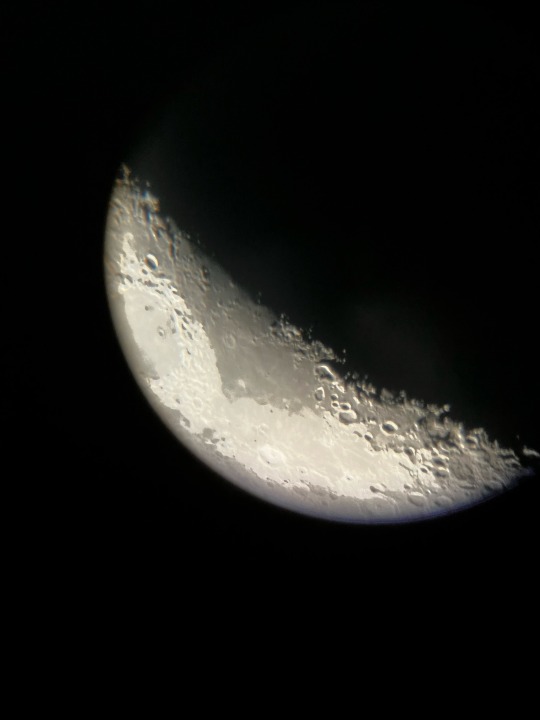

Pulled my telescope out to look at the moon. She’s so pretty.
My telescope is a Celestron 8SE. And picture taken with my phone by carefully lining up the camera with the eyepiece.
8 notes
·
View notes
Text

Then we have this good looking one!
Pointed @ Orion-ish?
(I'm having a hard time identifying this on Stellarium!)
Orion StarBlast II 20 mm eyepiece || Google Pixel Pro 7
Exposure time: 6 Seconds
13 notes
·
View notes
Text
Quick question
How do you feel about Starlink and Space-X?
#astronomy#space#amateur astronomy#astronomer#satellite#space-x#elon musk#starlink#science#technology#opinions#poll#tumblr polls
8 notes
·
View notes
Photo

M51a and NGC 5195...the Whirlpool Galaxy and the little dwarf companion that it's been dancing with for millions of years.
382 notes
·
View notes
Text

I didn't take my professional camera equipment bc I wanted to experience the moment but I'm delighted by this quick shot I managed to capture in central Ohio with the night vision mode on my camera. You can barely see Venus on the lower right and Jupiter on the upper left as well as the beautiful corona
#my photo#sun#astrophotography#solar eclipse#solar eclipse 2024#planets#amateur astronomy#heliophysics#do you love the color of the sky#ohio
6 notes
·
View notes
Text
Different to what I normally post but I got a new telescope for Christmas and I wanted to give it a go now that I had a clear bit of weather. It was still very windy and you can probably tell by the shaking and how fast the clouds move
4 notes
·
View notes
Text
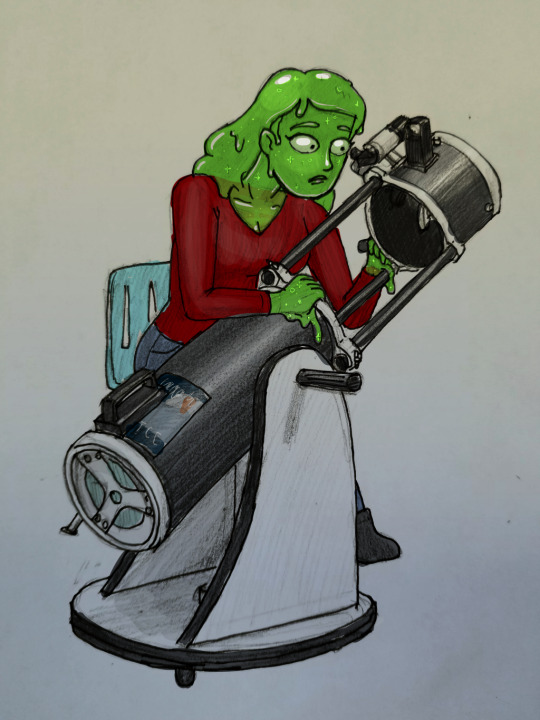
Eaurp Guz at the eyepiece of a Skywatcher FlexTube 200P Dobsonian telescope
below the cut: unedited purely traditional art version.

13 notes
·
View notes
Text
Happy Jupiter day 💙
📸 by me
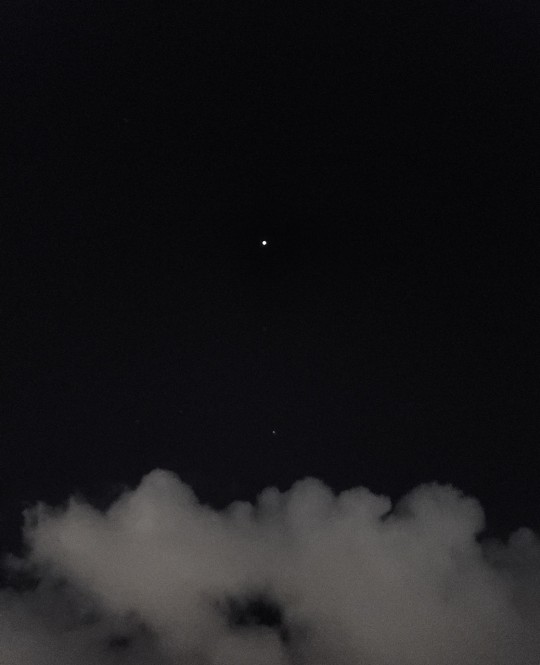
45 notes
·
View notes
Text


anyway uhhhhhhhhh.
Mars
(taken 01/15/2023, evening, near Stone Mountain, GA)
#amateur astronomy#amateur astronomers be taking pics thru trees 😔#space#astrophotography#photography#stars#mars#planets#hp's pics
12 notes
·
View notes
Text
A Southern Emission Nebula
An emission nebula and open star cluster in the constellation of Ara.
NGC 6188, Caldwell 82, in Ara
With Associated Open Star Cluster NGC 6193
Image exposure:121 MinutesImage Size:1.54º x 1.03ºImage date:2023-06-10
Don’t just look at the nebula. Look at the stars too.
A nebula is nothing without its stars and this emission nebula has some vivid star clusters and numerous bright strings of stars associated with it. The main star cluster NGC 6193, which is…
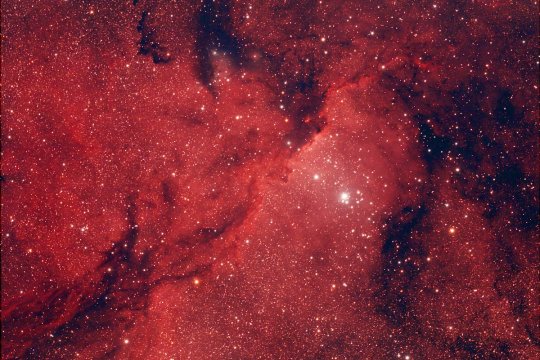
View On WordPress
#amateur astronomy#Ara#Astronomy#C82#Caldwell 82#Cosmic Focus Observatory#cosmos#deep sky#Featured#HD 150135#HD 150136#image#nature#Nebula#NGC 6188#NGC 6193#photography#rcw 108#science#Skywatcher EQ6-R#Skywatcher esprit 120#space#Universe#ZWO ASI071
6 notes
·
View notes
Text
Crux, The Southern Cross
Crux may be the smallest out of the 88 constellations but it is certainly not to be passed by. Simple and compact, it is a distinctive cross made up of 4 bright stars. Acrux (α-Cru) and Mimosa (β-Cru) are multiple star systems. The double star to look out for is Acrux which is distinguishable by a telescope revealing twin blue-white stars of magnitude 1.3 and 1.7. The red giant Gacrux (γ-Cru) of mag 1.6 contrasts with the constellations other blue-white stars with its notable reddish hue. The pulsating variable, Imai (δ-Cru), is the dimmest out of the 4 which shines with an apparent mag of 2.8. There is a 5th star, Ginan (ε-Cru) that is not included as part of the cross but crucial when it comes to identifying the cross. With a mag of 3.58, this orange giant star can be snuffed out in light polluted skies.

Like its northern counterpart, the big dipper, Crux can be used as a signpost to find the south celestial pole. It can be quite confusing since any random stars can be used to form a cross in the sky. The False Cross asterism is a common navigation error when 2 stars from Vela and another 2 from Carina was mistaken for the Southern Cross constellation. 4 neighbouring stars from Carina also form another asterism called the Diamond Cross. The key is to always look out for a lil star, ε-Crucis, between Acrux (α-Cru) and Imai (δ-Cru). They are almost in line with each other. Another key element is that Crux will always be accompanied by The Pointers, consisting the stars Rigel Kentaurus (α - Cen) & Hadar. (β- Cen). They are 2 stars of somewhat equal brightness from the constellation Centaurus just east of Crux.
How to find south with Crux and the Pointers
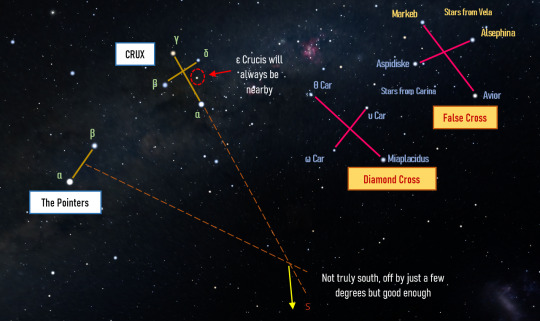
Firstly, perpendicularly bisect the line formed by α & β-Cen and extend the line all the way down. Then followed by a straight line going downwards from γ-Cru to α-Cru. The point where these 2 lines meet will mark the southern pole.

Where to look? (From a perspective of 4°N)
Being a prominent southern hemisphere constellation, those living way down south will see it as a circumpolar constellation meaning it will never set. If you're living in latitudes above 20°N, it will not be visible. In the picture, I've included the "Pointers" as well for ease of identification and orientation. From 4°N, Crux can be seen as early as April at sundown at SSE. Both the Pointers and Crux are fully visible late April. Best time for viewing will be in May where it is high up in the sky when you're facing exactly South (Duh). As July went by, it makes its way towards western horizon. It will not be seen again until January but only appearing in the wee hours of the morning.
#astronomy#space#stargazing#stars#southern cross#Crux#navigation#amateur astronomy#universe#constellations
4 notes
·
View notes